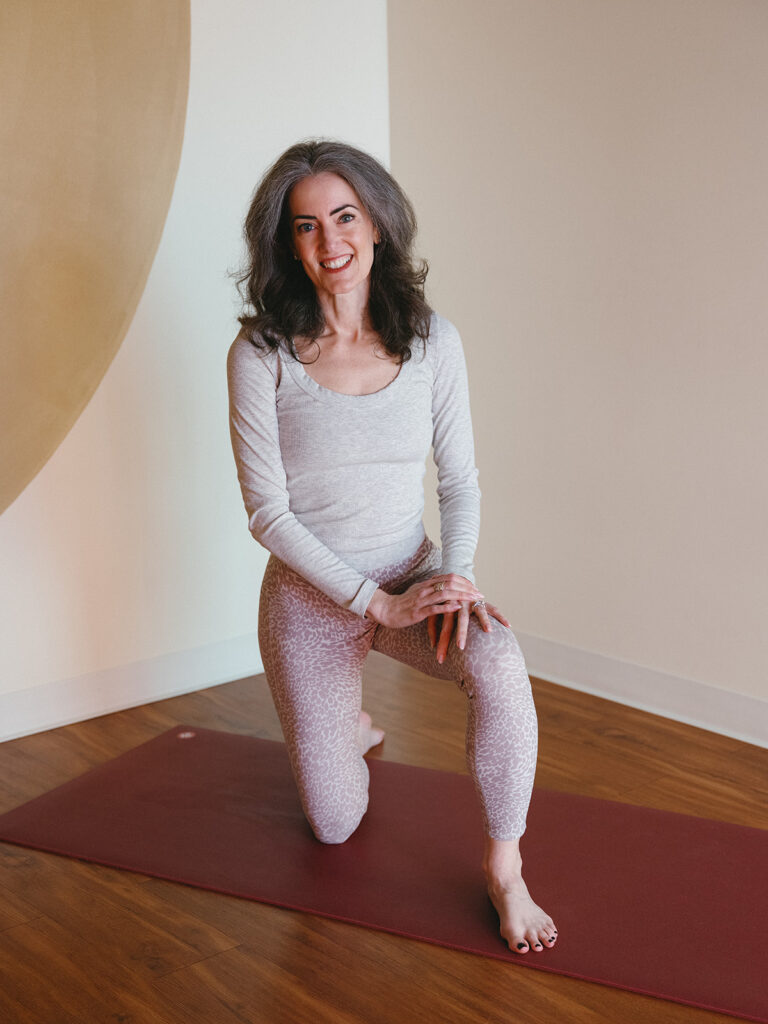The way you close your yoga class is just as important as how you begin. Students might forget the details of the sequence you taught, but they’ll remember how they felt when they left. A rushed or awkward ending can leave them feeling unsettled, while a thoughtful, well-structured closing fosters integration, ease, and a sense of connection.
If you want to increase student retention and create a memorable class experience, you need to stick the landing. Here’s how to craft a strong closing that keeps students coming back.
Why the Last Five Minutes of Class Matter
Think about your favorite books or movies. A weak ending can undermine even the most brilliant beginning and middle. The same is true for yoga classes.
The final moments of class help students:
- Integrate the physical and mental benefits of practice
- Transition from the focused, internal state of yoga back to everyday life
- Retain key themes or intentions from class
- Leave with a positive impression that makes them want to return
Yet many teachers rush through this part, either because they mismanage time or because they haven’t thought through their closing sequence. A well-planned ending, on the other hand, creates a smooth and satisfying conclusion.
The Essential Elements of a Strong Class Closing
A powerful closing doesn’t happen by accident. It has a structure, just like the rest of class. Here are the key elements to include:
1. Physical Completion
Your closing sequence should gradually bring students down from active movement into rest. In most traditions, this includes some form of final relaxation—savasana, seated meditation, or another restorative posture.
2. Mental and Emotional Integration
Encourage students to notice the effects of their practice. This could be as simple as a brief body scan, a moment of silence, or a guided reflection.
3. A Clear Signal That Class is Ending
Students should feel a sense of closure. You can mark the ending with a chime, a poem, or a ritual phrase that you use consistently.
4. Practical Logistics
This includes instructions about putting away props, upcoming class announcements, or any other relevant details. Keep this separate from the heart of your closing so it doesn’t break the mood.
The Role of Final Relaxation
Final relaxation isn’t just a nice bonus at the end of class—it’s essential. During active practice, we engage the sympathetic nervous system, intentionally applying stress to the body to encourage adaptation. In final relaxation, the parasympathetic nervous system takes over, promoting recovery and integration.
Skipping or rushing through final relaxation can rob students of one of the most crucial benefits of yoga. Even in a time-crunched class, aim for at least one minute of final relaxation for every 10 minutes of total class time. That means:
- 60-minute class → at least 6 minutes of savasana
- 45-minute class → at least 4-5 minutes
- 90-minute class → up to 10 minutes
If time is tight, be upfront about it. Let students know at the beginning of class how long their final relaxation will be so they can adjust their expectations.
Guiding Students through Final Relaxation
Some teachers leave students in complete silence, which can be powerful for experienced practitioners but disorienting for beginners. Others talk too much, preventing students from fully letting go. The best approach is a balance:
1. Guide students into the posture with clear instructions.
2. Offer a brief body scan or visualization to help them settle.
3. Allow for silence, but let students know when they’ll hear your voice again.
One way to do this is to preview a chime before you stop speaking: “I’ll play this sound when it’s time to come back. Until then, there’s nothing you need to do or make happen.”
This helps students relax fully, knowing they don’t need to stay alert for the next cue.
Transitioning Out of Final Relaxation
Just like the transition in, the transition out should be gradual. If you rush students from deep rest to an upright seat too quickly, it can feel jarring. Here’s a smooth sequence:
1. Deepen the breath slightly to signal the shift.
2. Add small movements like wiggling the fingers and toes.
3. Encourage students to stretch as they’re ready.
4. Roll to one side for a few breaths.
5. Press up to seated at their own pace.
Always include the option to stay in relaxation longer if needed. Some students process more slowly than others, and a little extra space can make all the difference.
How to Make Your Closing Ritual Memorable
The very last moments of class are a powerful opportunity to solidify the experience. You can use this time to:
- Offer a closing thought that ties back to your class theme
- Read a poem or inspiring passage
- Chant or breathe as a group
- Guide a moment of gratitude or dedication
- Simply sit in silence together
Whatever you choose, keep it authentic and consistent. Students appreciate knowing what to expect, and a familiar closing ritual helps them feel at ease.
Should You Say “Namaste”?
Many Western yoga teachers close with “Namaste,” but in India, this word is actually a greeting, not a goodbye. Instead, you can simply say what you mean: “I see you. I acknowledge you. I honor you.”
Yoga is about connection, and students come to class to feel seen. A closing that recognizes both individual and collective experience fosters a deeper sense of community.
Avoid These Common Closing Mistakes
Even experienced teachers can fall into these traps:
🚫 The Disappearing Teacher. Don’t check your phone or start packing up while students are in savasana. Stay present.
🚫 Rushing the Ending. If you’re short on time, adjust your sequence earlier rather than cutting final relaxation.
🚫 The Endless Ending. Too many closing elements can dilute the impact. Keep it focused and intentional.
Adapting Your Closing for Different Settings
Different classes may call for different endings:
Beginners
Offer more guidance and explain the process.
Experienced practitioners
Allow for more silence and subtlety.
Corporate/workplace settings
Acknowledge the transition back to work.
Outdoor or nontraditional settings
Consider a standing body scan if lying down isn’t practical.
Trauma-sensitive classes
Emphasize choice in every step, including whether to close the eyes.
Final Thoughts: Make Your Class Memorable
A strong closing transforms a good class into an unforgettable one. By approaching your ending with the same care and intention as the rest of your sequence, you’ll ensure that students leave feeling grounded, complete, and eager to return.
I’d love to hear how you end your classes! Share your thoughts in my free yoga teacher community: Comfort Zone Yoga.


